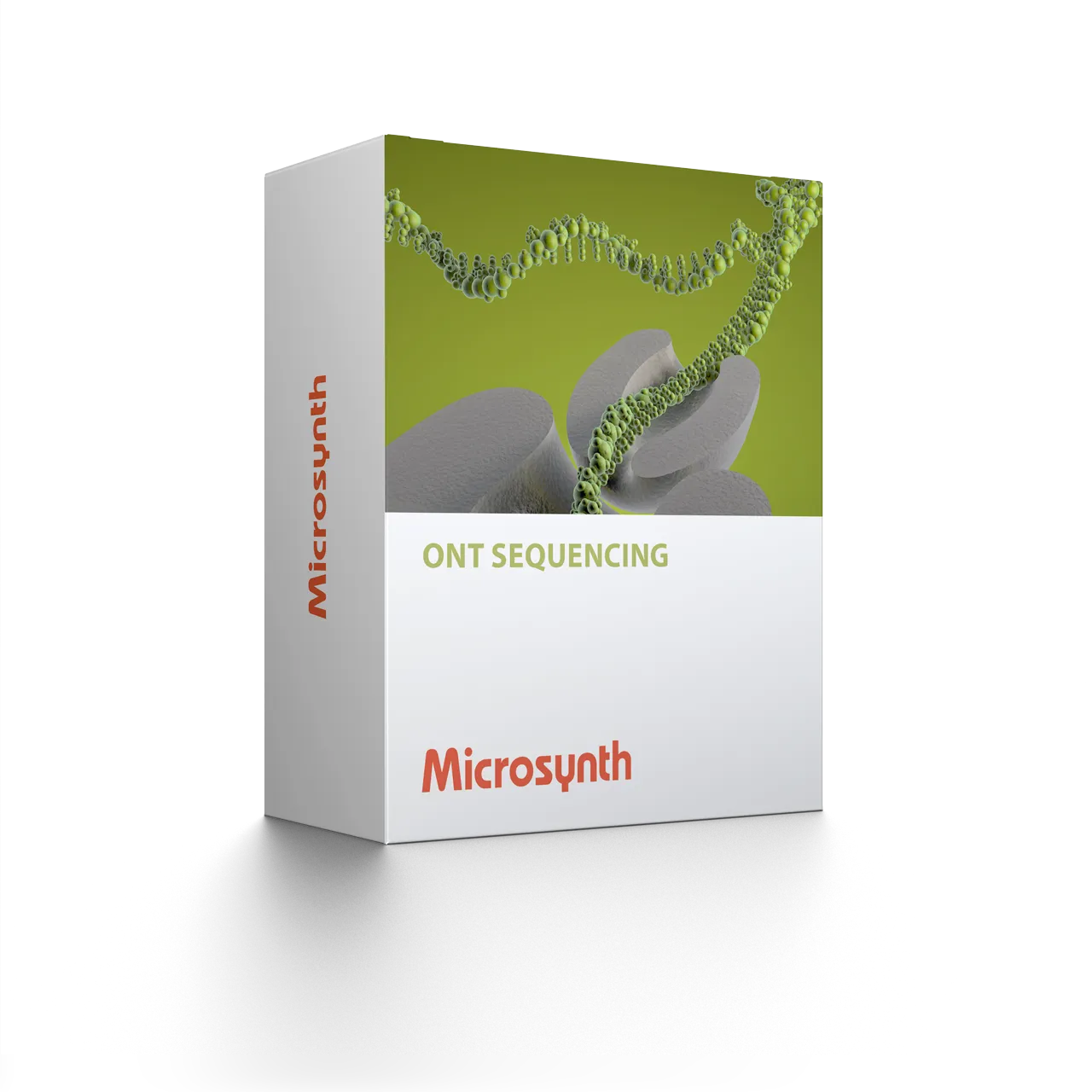
Back to top
nanoCORE Amplicon Metagenomics

High-resolution microbial community profiling using Oxford Nanopore long-read sequencing
Whether you are assessing environmental samples, agricultural soils, or clinical material, nanoCORE Amplicon Metagenomics delivers accurate and reproducible insights into the composition and diversity of your microbial ecosystem.
What You Can Achieve
- Obtain species-level identification of bacteria, archaea, and fungi in complex samples
- Analyze microbial diversity and community composition across multiple samples
- Compare intra- and intersample variation and visualize community structures
- Detect rare taxa and capture the full-length marker sequence without amplification bias
- Reduce time and costs compared to short-read or multi-step metabarcoding workflows
Before You Start
- Scientific objective – community profiling, species-level taxonomic resolution, or diversity comparison across samples?
- Target marker – 16S, 18S, ITS, or archaeal 16S depending on your microbial community of interest.
- Starting material – isolated DNA, environmental sample, soil, plant-associated, or clinical material.
- Desired services – from DNA isolation to complete sequencing and bioinformatic reporting; modular entry options available.
- Result type – interactive bioinformatic report.
Modular Workflow
Outsource the complete workflow or select specific modules. Our process is designed for flexibility. Typical steps include:
Bioinformatics Analysis
With nanoCORE Amplicon Metagenomics, you receive an intuitive, interactive results package designed for clear interpretation of your microbiome data:
- Comprehensive report (.html) – interactive summary with filtering and sorting functions
- OTU sequences (.fasta) – full-length operational taxonomic units
- Abundance and taxonomy tables (.tsv) – OTU counts, taxonomy assignments, and confidence scores
- Diversity analysis (.tsv, .pdf) – intra- and intersample diversity metrics with rarefaction curves
- Krona chart visualization (.html) – interactive graphical exploration of community composition
- Principal component analysis (.tsv, .pdf) – overview of sample relationships and clustering
- Statistical analysis visualizations – clear graphical representation of results
These outputs provide a complete overview from community composition to statistical interpretation, enabling informed conclusions on microbial diversity and structure.
Example Results
All results are delivered in publication-ready figures and interactive formats, providing both high-level overviews and nucleotide-level detail.
Primer Systems
Choose the primer system that best fits your research focus.
| Target Organism / Application | Primer System | Amplicon Size | Key Benefit |
| Bacteria (broadest coverage) | 16S Advanced | ~1500 nt | Microsynth’s proprietary full-length 16S rRNA primer; minimizes bias and captures broad bacterial diversity (recommended default). |
| Bacteria | 16S ONT | ~1500 nt | Standard ONT 16S primer compatible with Nanopore workflows; suitable for general bacterial profiling. |
| Archaea | 16S Archaea | ~1000 nt | Specifically optimized for diverse and novel archaeal taxa from environmental samples. |
| Fungi / Eukaryotes | ITS1-4 | ~1200 nt | Pan-eukaryotic ITS system enabling fungal and broader eukaryotic community analysis. |
| Fungi (optimized) | ITSFu | ~1200 nt | Focused on fungal ITS amplification for high-confidence fungal identification. |
| Eukaryotes incl. fungi | 18S-ITS | up to 1500 nt | Combines 18S and ITS regions for comprehensive eukaryotic profiling. |
Note: Depending on sample origin, amplification may also include non-target eukaryotic DNA (e.g. plant material). Such reads are not assigned taxonomically in Microsynth’s standard analysis but can be evaluated by the customer if desired.
Turnaround Time
- Delivery of data within 10 working days upon sample receipt (includes library preparation, sequencing and data analysis/bioinformatics)
- Additional 5 days for DNA isolation
Sample Requirements
Samples can be submitted as isolated DNA or material for DNA isolation.
- Required input: ≥0.1 µg total DNA per sample (≥5 ng/µL in ≥20 µL)
- Solvent: DNase-free water or 10 mM Tris-HCl (pH 7.5–8.5)
- Shipment: Tubes for <24 samples or 96-well plates for ≥24 samples
- For isolation services: follow Microsynth’s Nucleic Acid Isolation User Guide and ship at ambient temperature (or on dry ice for longer transit)





